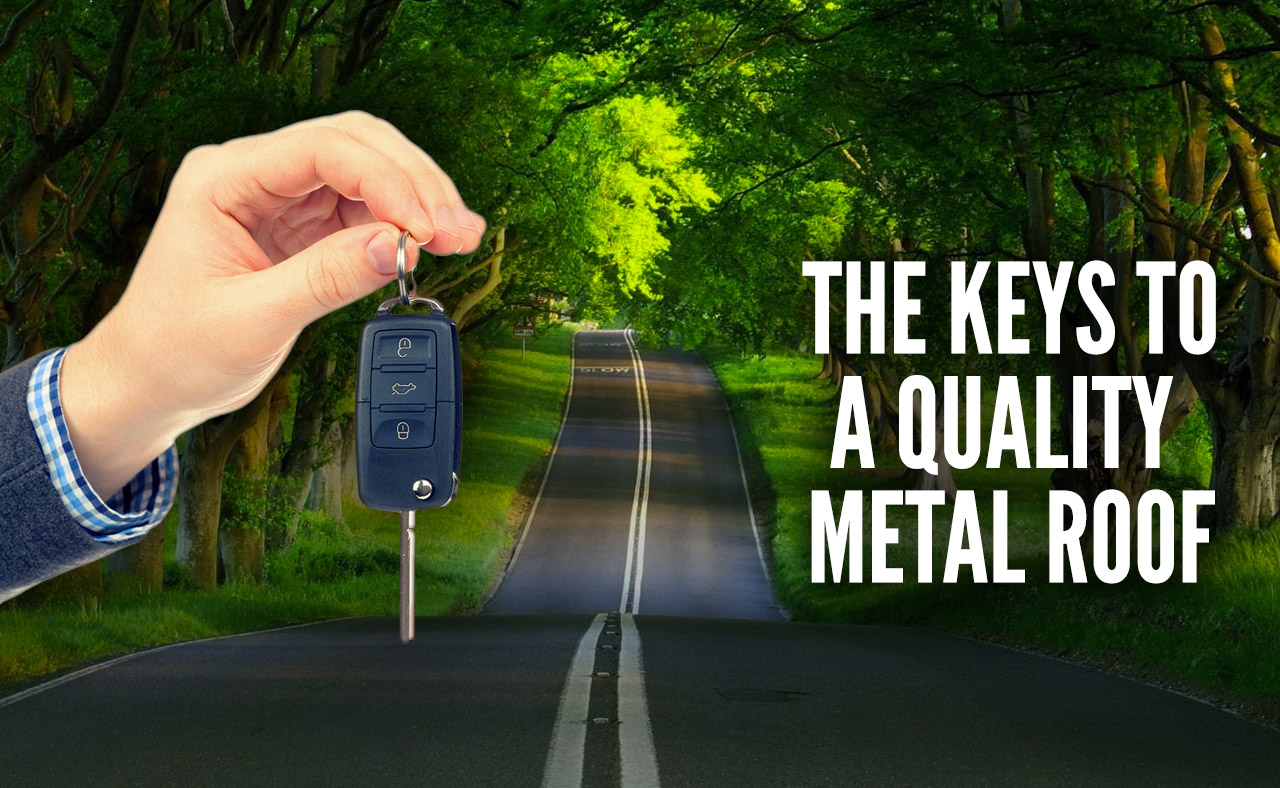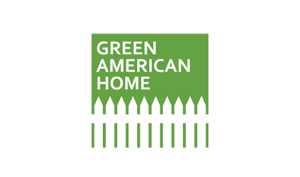The Keys To A Quality Metal Roof
August 8, 2018

Right now, more than ever, we’re seeing real issues with people buying sub-standard metal roofs. This leads to nothing but disappointment down the road.
It appears that low quality, and perhaps even dangerously-produced products are being “dumped” into the United States from China and other countries. While tariffs on foreign-produced metals have impacted U.S. manufacturers, fabricated products are coming into the United States tariff-free and at very low prices, presumably to make up for the decline in metal coil being shipped into the U.S.
We are concerned that consumers have these products installed on their homes that have very suspect warranties and usually no United States product testing or code listings and approvals.
Expect More. Expect Quality.
How can a consumer gauge the quality of the products they are considering?
A metal roof is a significant financial investment that you expect to protect and beautify your home long-term, save energy and add value. With that investment and today’s realities in mind, we’ve developed a guide that can help inform, educate, and keep you on course for a good purchasing decision.
Keys To A Quality Metal Roof
- Manufacturer
The product warranty on your new roof will come from its manufacturer. For that reason, you want a manufacturer that is proven and also one that is committed to residential metal roofing. Manufacturers of metal roofing generally fall into three groups: A) National / International; B) Regional; and C) Local Fabricator. While there are always variances, generally, the manufacturers operating at the National and International level have been around the longest and are the most likely to be around in the future. Out of those manufacturers, though, there are some that are heavily committed to the residential side of things and there are some for whom residential is just a small part of what they do. Those in the latter category often have less understanding of a homeowner’s needs and expectations. - Warranty
Like virtually all construction-related materials, your metal roof should come with two warranties – a Product Warranty from the manufacturer and an Installation Workmanship Warranty from the contractor. Always be sure to receive both in writing prior to signing a contract. Review the warranties and make sure that they come from credible companies that can be expected to be around many years down the road. We would encourage that the Product Warranty comes directly from a North American manufacturer as other warranties may be very difficult if not impossible to collect on. In analyzing the warranties, here are key questions to ask:- What exactly does the warranty cover? Beware of warranties that cover just manufacturing defects or have waivers for “cosmetically acceptable” as claims under these can be very difficult to prove and even subjective.
- Is the warranty prorated over time and, if so, what is the proration schedule? Some warranties are non-prorated for a few years and then prorate very dramatically going forward.
- Does the warranty include specific wind and hail coverage? These are the two most common enemies of roofing.
- Can the warranty be transferred to a future owner, and more than once?
- Are there fees associated with transferring or even registering the warranty?
- Metal
There are four primary types of metal used in roofing:- Galvanized Steel with a primarily zinc coating for corrosion resistance
- Galvalume Steel with a primarily aluminum coating for corrosion resistance
- Aluminum
- Copper
There are design reasons for why a product may be made from a particular metal. Aluminum and copper, for example, are more malleable than steel. From a consumer standpoint, though, there may be reasons for choosing one metal over the other for your application. For example, aluminum is often used in corrosive coastal environments. One big caution here – with both Galvanized and Galvalume, there are different grades available. For Galvanized, we suggest no less than G90 Grade and, for Galvalume we suggest no less than AZ50 with a painted surface.
- Coatings
Aside from copper roofs which are normally mill finish, there are five basic coating types available today on residential metal roofs:- Clear Acrylic. This type of coating is used on lower-end corrugated metal roofing where a “mill finish” or “bare metal” look is desired. The clear acrylic is in place to facilitate forming and transport of the metal panels and it erodes away after 5 – 7 years of weather exposure.
- Polyester Variant. There are several grades of polyester coatings available today that can provide for a nice “intermediate” quality grade. While the so-called “Super” or “High Performance” variants of polyesters will out-perform older polyester chemistries, the resin still breaks down over time, and rapid performance declines in terms of fade and chalk resistance can be seen after about ten years of exposure based upon the geographic climate.
- PVDF or Polyvinylidenefluoride. Designed for the longest-term performance, these coatings are sold under the trade names of Kynar 500 and Hylar 5000 and are widely respected as having the best fade and chalk resistance. PVDF coatings typically incorporate heat-reflective pigments for energy efficiency and they also are available in much of today’s “print coat” technology which allows for multiple colors on a roof. For even more robust performance, some of the print coats will have a clear coat PVDF finish on top of them.
- Aggregate. These “stone coatings” provide a nice “bridge” from asphalt shingles to metal shingles. They are commonly available, though, on panels that do not interlock on all four sides as well as on products that have exposed fasteners. One caution with these coatings, especially in damp or wooded environments is that they can get streaks and stains of algae on them similar to asphalt shingles. Additionally, over time, the granules will wear away.
- Powder PVDF. These unique finishes are sold under names like ThermoBond and they consist of a textured PVDF coating applied on top of a standard smooth PVDF coating. The result can be a highly decorative finish consisting of blended or even custom colors with a 100+ year life expectancy due to the thickness of the coating.
- Product Design
A big part of your metal roofing decision should pertain to the style of metal roof you choose. There are many different styles available, all with different looks. Choosing the right look for your home is important and can be simplified by using various online Visualizer tools provided by manufacturers. You may choose a traditional vertical seam panel or a product that looks like shingles, shake, slate, or tile. It surprises many people that the more decorative styles are not much different in price from more traditional metal roofs.However, in addition to the “look” you wish to achieve, there are two other very important considerations in regards to product design:- Fastening. Does the product have exposed or concealed fasteners? While exposed fastener products are lower in price, the fasteners can require periodic tightening and even replacement. They are always a “weak spot” in those systems.
- Interlock vs. Overlap. Some metal roofs fully interlock on their sides, offering greater weather and wind resistance. Panels that just overlap on two or all sides can be prone to the overlaps opening up over time, filling with debris, and jeopardizing roof system performance.
- Product Testing, Listing, and Approvals
Verifying what testing and approvals a metal roof product have gone through is one way to guard against inferior products coming in from other countries. While there are good offshore products that have appropriate testing and approvals, many do not. Ensure that your metal roof has gone through tests for Wind Uplift, Impact Resistance (UL 2218), Weatherization, and Fire Resistance. Check and make sure that the product is listed with applicable construction and insurance codes in your area before allowing it to be installed on your home. Not doing so puts you and your home at risk. Additionally, we highly encourage choosing products that are Certified Premium Quality by the Metal Construction Association, the only third-party entity verifying product quality. - Installation
Finally, we can’t stress enough, make sure that the folks actually installing your roof are properly experienced and trained. In today’s world of skilled labor shortages, we’re unfortunately seeing roof installations badly botched by well-meaning but poorly-skilled installers. Verify with your contractor and the roof manufacturer that your installers have the proper experience with roofs and products similar to yours. Most quality manufacturers also offer installation training for installers.
We hope that the Keys To A Quality Metal Roof help guide you in your product selection. To explore the ways in which our roofing products address each of the seven Keys, explore our brand websites, or, you can Ask Todd Miller.
Feel free to contact us if you have any questions or if there is any way in which we might be of service. Our phone number is 1-800-543-8938.



